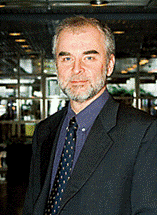Statistical and media truths
- Science is suspicious of unexpected findings
- News seek attention
- News consumer has hunter's fears
- Interpretation of public data involves risks
Whole document on one page
Jussi Melkas. The author is Senior Adviser at Statistics Finland. He is a regular contributor to Tieto&trendit magazine. This article was published in Statistics Finland's Tieto&trendit magazine, Vol. 7/2011.

Last spring a group of experts at the International Agency for Research on Cancer, which is part of the WHO, decided to classify the mobile phone among products that may possibly cause brain cancer. The decision aroused considerable attention, and many people interpreted the news as meaning that the radiation caused by mobile phones is dangerous.
This is not quite the truth of the matter. In the classification system used by the WHO, possibly carcinogenic to humans represents a smaller risk than probably or certainly carcinogenic. The Working Group had come to the conclusion that there is some evidence of a link between the mobile phone and brain cancer, but that there is insufficient knowledge of what causes the link. There may, for example, be a third factor involved. At least it cannot be established with certainty that there is no connection between the mobile phone and cancer.
The Working Group did not say anything about how strong the link between the mobile phone and brain cancer is. In all probability the link can be fairly weak, in other words there may be a very slight risk of cancer.
The conclusion gave rise to a proliferation of different headlines around the world. The tabloid-type media made the most of the risk aspect. "Mobile phones can cause cancer!" As a result of the decision people were demanding restrictions to children's use of mobile phones. The media with close connections to the mobile phone industry, on the other hand, questioned the expert group's work: "The industry rejects the killer phone report: no problems have been observed".
Depending on the approach, the risks of the mobile phone were presented in different ways, by referring to other substances on the above mentioned list of possibly carcinogenic agents. If the media wanted to stress the risks of using mobile phones, they mentioned that DDT and exhaust gases belong to the same group. Both of these are hazardous substances but not as carcinogens. If, on the other hand, the intention was to play down the risk, it was pointed out that coffee and talcum powder are also in the same group as mobile phone radiation.
The different ways in which the Working Group's report was handled shows the conflict that exists between the scientific approach to information and its use by the media for news value. Often it is the scientific, moderate, cautious point of view that loses the battle.
Science is suspicious of unexpected findings
In scientific thinking a great deal of attention is paid to the reliability of the methods by which information is produced. New information is always compared to earlier findings. Surprising results are examined critically and always analysed to see whether the changes could be attributed to some other reason than a real change. Among other things, the possible effects of measurement methods and of chance are assessed.
From the point of view of the subject discussed here, scientific and statistical thinking more or less converge. For example, the quality criteria for Finland's official statistics are to a great extent the same as those set for science, emphasising, for example, the reliability and comparability of the data.
Emphasis is also placed on the significance of randomness, both in science and in statistics. Even the best set up research or statistics can produce misleading results due to the effect of chance.
The WHO Working Group's solution is a very apt example of scientific thinking and interpretation of results. The possibility of cancer was not excluded, but neither was it confirmed.
Top Previous Next
P�ivitetty 2.11.2011
